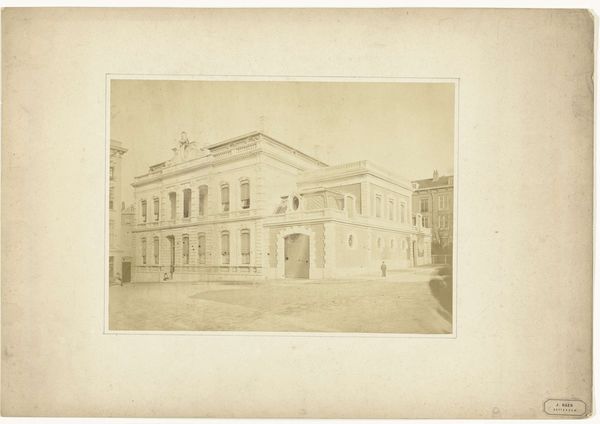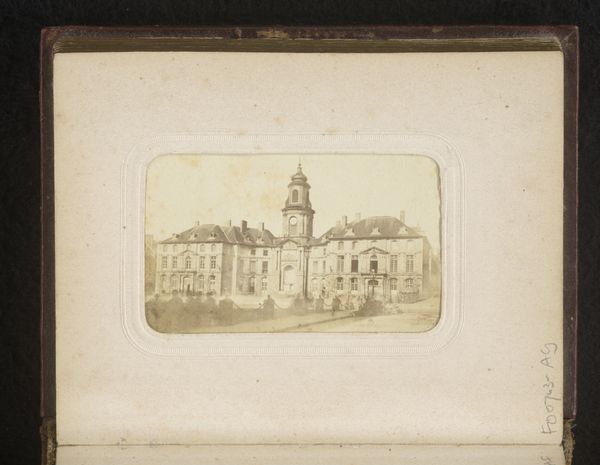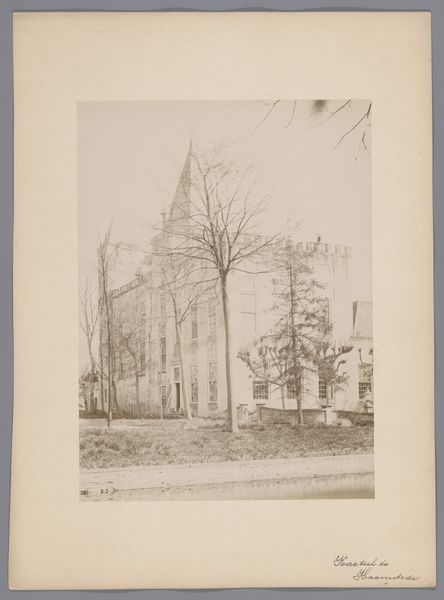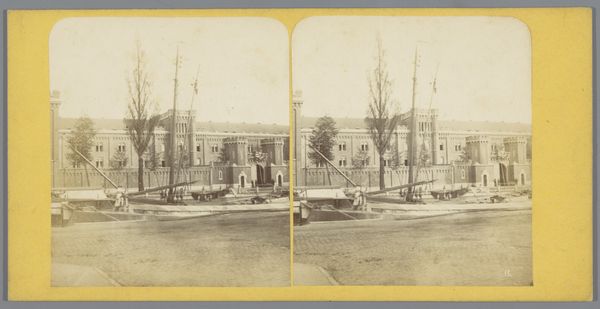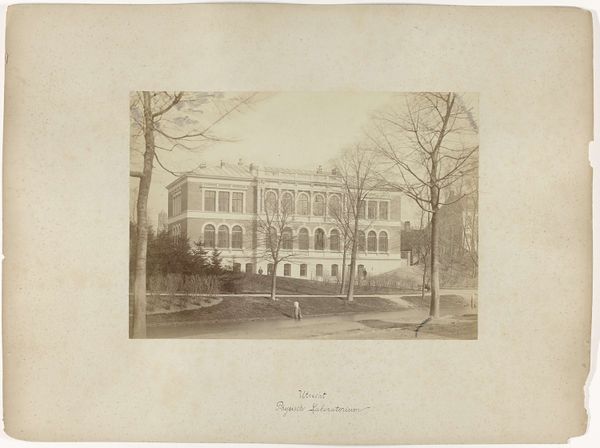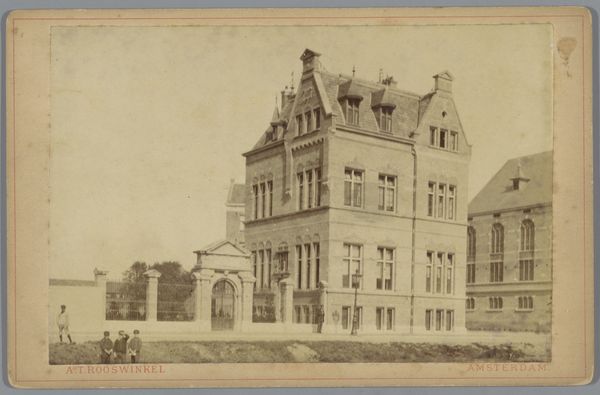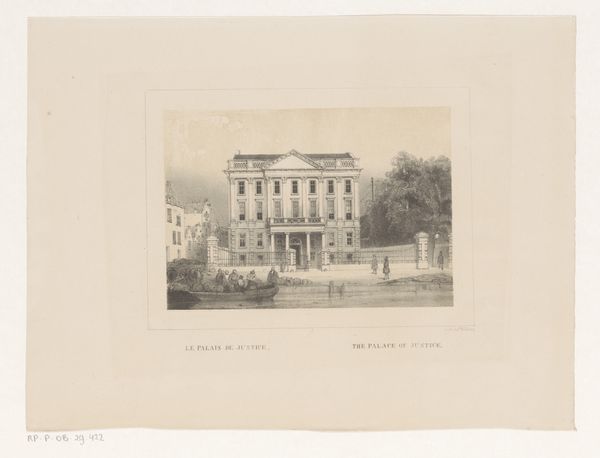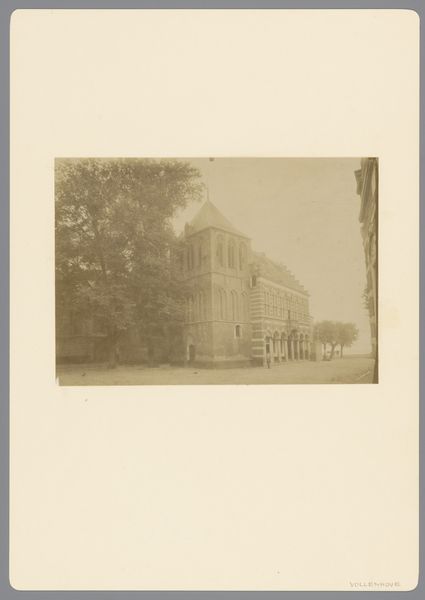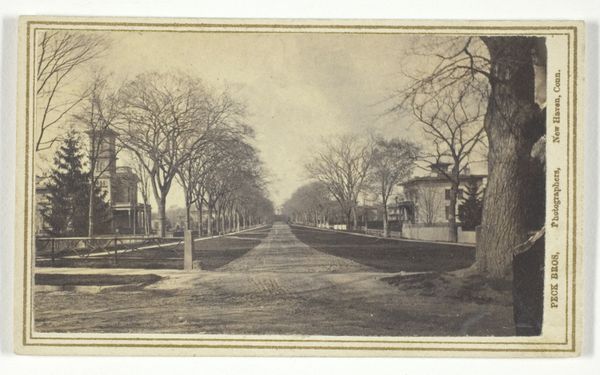
Gezicht op panden aan de Keizersgracht ter hoogte van de Herenstraat waaronder links Felix Meritis 1860 - 1875
0:00
0:00
andriesjager
Rijksmuseum
photography, albumen-print
#
dutch-golden-age
#
photography
#
cityscape
#
albumen-print
#
realism
Dimensions: height 106 mm, width 165 mm
Copyright: Rijks Museum: Open Domain
Curator: This albumen print offers a “View of buildings on the Keizersgracht near the Herenstraat, including Felix Meritis on the left" and we believe it to be the work of Andries Jager, dating somewhere between 1860 and 1875. It is now held in the collection of the Rijksmuseum. Editor: The first thing that strikes me is the serene stillness. The composition, though ostensibly a simple street view, is very deliberately structured. The building on the left—is that Felix Meritis?—commands attention with its classical facade and verticality. Curator: Yes, that’s right. Felix Meritis was a society dedicated to the Enlightenment ideals. Look closely; you see the architectural symbols: the emphasis on reason, order, and classical antiquity. Buildings like that represented the ambitions of the rising merchant class and their desire for progress. Editor: Interesting. But my eyes are also drawn to the reflection in the water; how it mirrors and almost doubles the urban landscape. The horizontal emphasis of the canal really creates a stable counterpoint to the buildings’ verticals. Note how the albumen print process renders subtle gradations, especially visible in the sky and water, giving depth. Curator: Consider that in 19th-century Amsterdam, water wasn't just scenery; it was crucial for trade and transportation. It reminds viewers that this cityscape, seemingly frozen in time, was very dynamic in its daily existence, both the source and means to enable an increasingly wealthy and globally oriented culture. Editor: Absolutely. It’s interesting that Jager chooses this angle; with the bridge slightly off-center. This is very unlike traditional Dutch Golden Age painting. Curator: Because this new medium offered so much possibility to literally document reality, and to see it from new perspectives, which changed how cities perceived and presented themselves. These photographic impressions offered tangible connections with a rapidly changing world. Editor: Yes, it is a world captured so carefully in tones of sepia. A somber, yet surprisingly uplifting moment caught for posterity. Curator: A world in flux, immortalized in a fleeting medium, creating a new kind of historical document that invited interpretation and discussion even then.
Comments
No comments
Be the first to comment and join the conversation on the ultimate creative platform.

